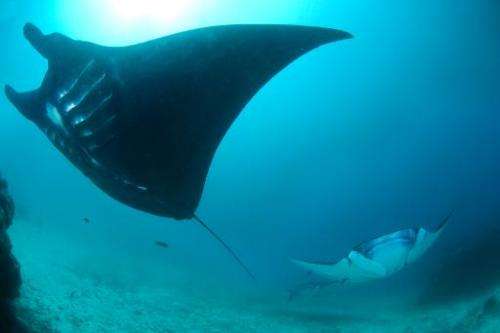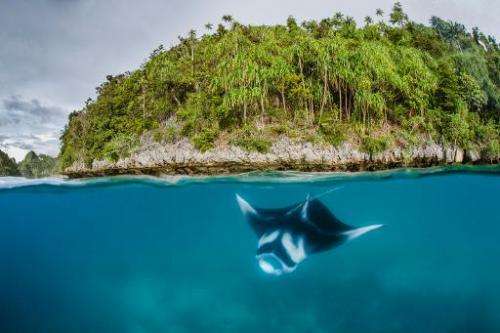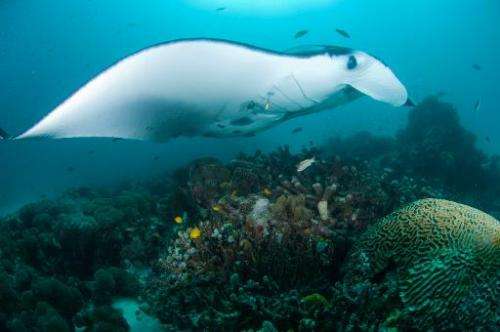Indonesia announces world's biggest manta ray sanctuary

Indonesia on Friday instituted the world's biggest manta ray sanctuary covering millions of square kilometres as it seeks to protect the huge winged fish and draw more tourists to the sprawling archipelago.
New legislation gives full protection to the creatures across all the waters surrounding Southeast Asia's biggest country, which for years has been the world's largest ray and shark fishery.
Protection group Conservation International hailed the "bold" move and said it was influenced by a recent government-backed review that showed a single manta ray was worth one million dollars in tourism revenue over its lifetime.
This compares to between $40 and $500 if caught and killed, the group said.
Many foreign tourists come to Indonesia every year to dive in some of the world's most biodiverse waters and manta rays are a favourite sight.
The gentle beasts have wingspans up to 25 feet (7.5 metres), which they flap to propel themselves gracefully through the water.
"Indonesia now has the second-largest manta ray tourism industry in the world, with an estimated annual turnover of $15 million," said Agus Dermawan, a senior official from the ministry of marine affairs and fisheries.
"Given the huge area of reefs and islands in our country, if managed properly, Indonesia could become the top manta tourism destination on the planet."
Indonesia is one of the few places in the world where tourists can easily see both species of manta rays, the oceanic and reef varieties. The new legislation protects both.

Taking tourists out to view rays and other sea creatures provides livelihoods for many people working in popular dive spots across Indonesia.
Key populations can be found near the resort island of Bali, Flores island in eastern Indonesia and Raja Ampat off the northwest tip of New Guinea island.
Raja Ampat, a famous diving spot, is one of the few places in the world where both species of ray can be seen in the same place at the same time.
Manta rays thrive in Indonesia due its coral reefs and strong currents as well as an abundance of the tiny animals the creatures feed on.
They are social, gentle and intelligent—they have the largest brain to body ratio of any fish.
Rays have little fear of humans which makes them popular with tourists but extremely vulnerable to being caught.
China demand threat
In recent years the number of rays have declined rapidly due to voracious demand in China—in particular for the creatures' gills—for use in traditional medicine.

The new legislation protects manta rays within Indonesia's 5.8 million square kilometres (2.2 million square miles) of ocean, banning fishing of the rays and their export.
It came a year after the local government in Raja Ampat announced the creation of a 46,000-square-kilometre shark and ray sanctuary.
"Tourism and fishery values of mantas are at direct odds with one another and we need to make a choice," said Tiene Gunawan, Conservation International's Indonesia marine programme director.
"The economics make our decision easy: we now know that a living manta ray is easily worth at least 2,000 times more alive."
Indonesia joins countries including Ecuador, the Philippines, New Zealand and Mexico in granting full protection to their manta rays.
The International Union for Conservation of Nature classifies both species of manta ray as vulnerable.
© 2014 AFP



















